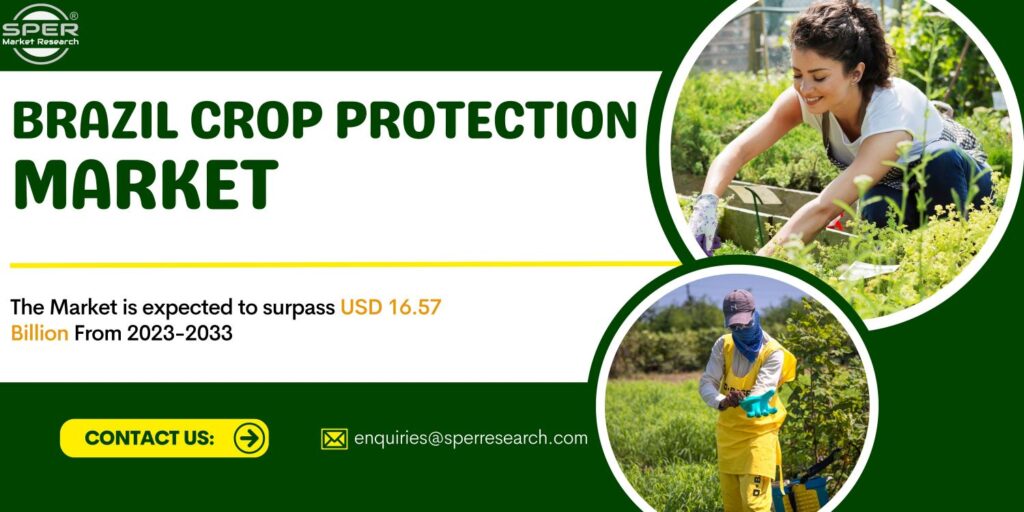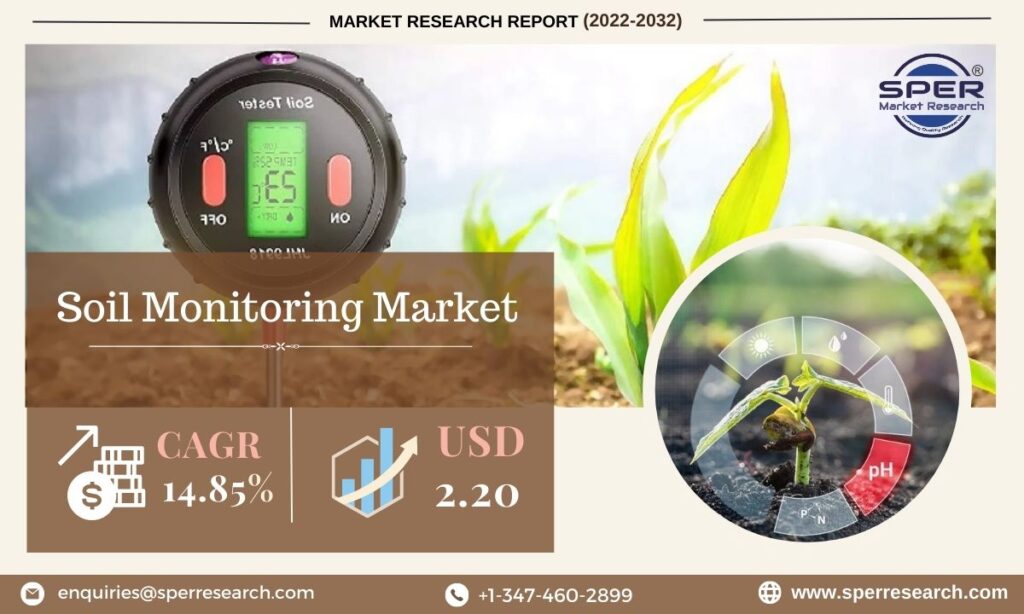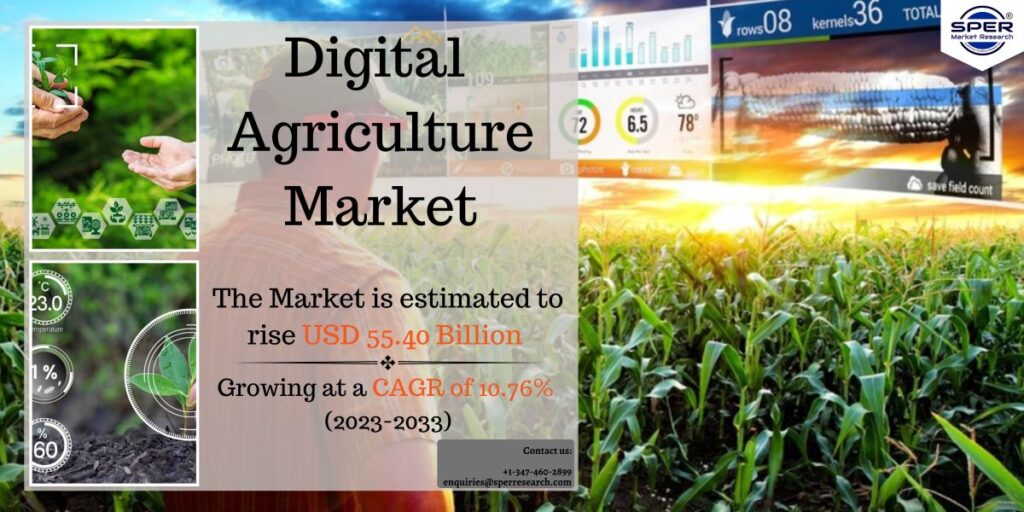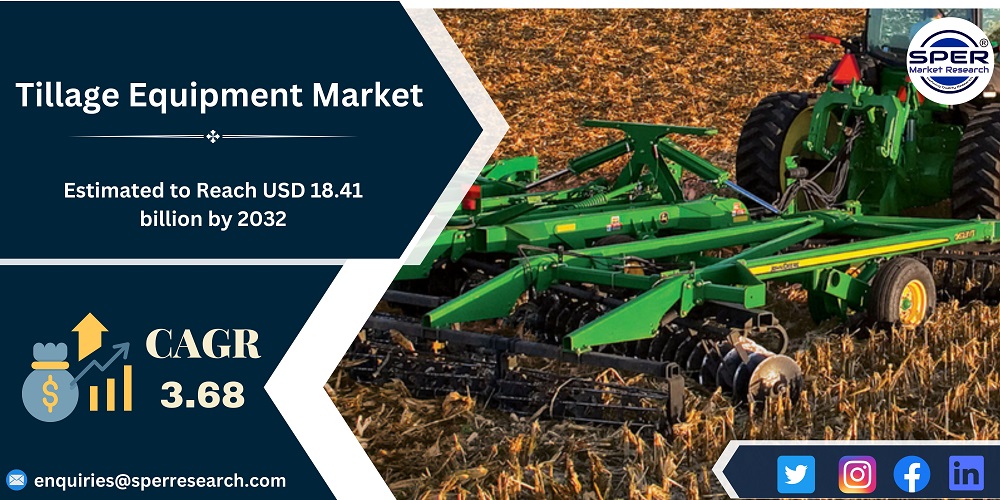Crop protection refers to the various practises and techniques used to protect plants and crops against pests, diseases, and weeds. Farmers use it as a protective barrier to ensure a healthy and abundant yield. Plants, like humans, require protection to stay healthy and grow effectively. Pest control is an important aspect of crop protection. Pests are insects, worms, or other microscopic organisms that consume plant leaves, fruits, or roots. Farmers use a variety of pest management techniques, such as applying certain insecticides or trapping them.
According to SPER Market Research, ‘Brazil Crop Protection Market Size- By Type of Pesticides, By Nature of Pesticides, By Market Structure, By Source, By Type of Crops – Regional Outlook, Competitive Strategies and Segment Forecast to 2033’ state that the Brazil Crop Protection Market is predicted to reach USD 16.57 billion by 2033 with a CAGR of 4.41%.
The growth of the Brazil crop protection Market is influenced by a few factors. Brazil’s extensive agricultural lands and diverse climate make it an attractive place for crop development. The country’s large and growing population increases food consumption, necessitating increasing crop production. Crop protection is critical in sustaining healthy crops by protecting them from pests, diseases, and weeds, which aids in the management of rising food demand. Brazil benefits from ideal weather, rich soil, and plentiful water supply, which attracts farmers and investors to the agricultural sector.
The crop protection market in Brazil faces several challenges that affect its operation and growth. Pests, diseases, and weeds all pose significant threats to crops, resulting in lower yields and financial losses. Crop protection technologies that are both effective and safe are necessary to address these challenges. Another issue is the environmental impact of crop protection practises, which needs a balance between efficacy and minimising harm to the ecosystem and beneficial species. Crop protection products must be safe and of high quality, which necessitates stringent controls and monitoring.
Request For Free Sample Report @ https://www.sperresearch.com/report-store/brazil-crop-protection-market.aspx?sample=1
Impact of COVID-19 on Brazil Crop Protection Market
The COVID-19 pandemic has had a significant influence on the Brazilian crop protection market. Many aspects of agriculture, particularly crop protection practises, have been influenced by the pandemic’s restrictions and disruptions. One of the industry’s early concerns was supply chain disruption. Farmers were unable to access essential crop protection goods such as pesticides and herbicides due to transportation and product movement restrictions. This resulted in supply disruptions and delayed the timely implementation of crop protection measures. Furthermore, the epidemic resulted in a worker shortage. Farmers struggled to find and hire adequate personnel for crop protection chores due to movement limitations and social distancing measures.
Brazil Crop Protection Market Key Players:
Geographically, crop protection products are in high demand in Brazil’s southern areas, such as Rio Grande do Sul, Santa Catarina, and Paraná, which are recognised for their large-scale grain production. These areas are key producers of soybeans, corn, wheat, and other grains, and farmers rely on crop protection chemicals to prevent pests, diseases, and weeds that can have a considerable influence on harvests. Furthermore, the humid atmosphere in these areas promotes the development of fungal diseases, necessitating the use of fungicides. In addition, some of the market key players are FMC Corporation, Nufarm do Brasil Ltda., Rotam Brasil, Syngenta Protecao de Cultivos Ltda. UPL Limited.
Brazil Crop Protection Market Segmentation:
The SPER Market Research report seeks to give market dynamics, demand, and supply forecasts for the years up to 2033. This report contains statistics on product type segment growth estimates and forecasts.
By Type of Pesticides: Based on the Type of Pesticides, Brazil Crop Protection Market is segmented as; Adjuvants, Fungicides, Herbicides, Insecticides, Plant Growth Regulators, Rodenticides, Biopesticides.
By Nature of Pesticides: Based on the Nature of Pesticides, Brazil Crop Protection Market is segmented as; Form of Pesticides, Generic, Granules and Powder, Liquid, Patented.
By Market Structure: Based on the Market Structure, Brazil Crop Protection Market is segmented as; Organized, Unorganized.
By Source: Based on the Source, Brazil Crop Protection Market is segmented as; Domestic, Import.
By Types of Crops: Based on the Types of Crops, Brazil Crop Protection Market is segmented as; Commercial Crops, Fruits and Vegetables, Grains and Cereals, Pulses and Oilseed, Turfs and Ornamental.
By Region: This report also provides the data for key regional segments of Eastern Region, Northern Region, Southern Region, Western Region.
This study also encompasses various drivers and restraining factors of this market for the forecast period. Various growth opportunities are also discussed in the report.
For More Information, refer to below link:-
Brazil Crop Protection Market Future Opportunity
Related Reports:
Follow Us –
LinkedIn | Instagram | Facebook | Twitter
Contact Us:
Sara Lopes, Business Consultant – U.S.A.
SPER Market Research
+1-347-460-2899









